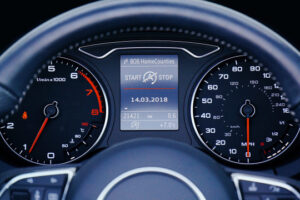Engine idling, the act of leaving a vehicle’s engine running while the vehicle is not in motion, has become a common practice in our modern world. However, this seemingly harmless habit can significantly impact the environment, our health, and our wallets. In this article, we will explore the ramifications of engine idling and provide tips on how to reduce your idling time to help protect our planet and your wallet.
 Facts and Myths About Engine Idling
Facts and Myths About Engine Idling
Engine idling is a common but harmful practice that can have negative impacts on our health, the environment, and our wallets. By dispelling these common myths and implementing tips to reduce idling time, we can all contribute to a healthier and more sustainable world.
Myth #1: You need to warm up your car engine in the winter before driving it.
This is a common misconception, but it is not necessary to warm up your car engine for more than 30 seconds before driving, even in cold weather. In fact, modern engines are designed to warm up quickly as you drive, and idling for too long can actually harm your engine.
Myth #2: Idling your car engine will keep it in better condition.
This is also a myth. In reality, idling your car engine can cause problems such as increased wear and tear on engine components and decreased fuel efficiency. Additionally, idling for extended periods of time can cause your engine to overheat, leading to costly repairs.
Myth #3: Idling your car for a few minutes is not harmful to the environment.
This is false. Idling for just a few minutes can produce harmful emissions, including carbon monoxide, nitrogen oxides, and particulate matter. These pollutants can contribute to air pollution and have negative impacts on your health and the environment.
Myth #4: Idling your car helps to save fuel.
This is a common misconception, but it is not true. According to the U.S. Department of Energy, idling for longer than 10 seconds wastes more fuel and emits more pollutants than restarting the engine. Idling for just two minutes can use as much fuel as driving one mile.
Myth #5: Idling is necessary for certain vehicles and equipment.
While some vehicles and equipment require idling for specific reasons, such as powering refrigeration systems or hydraulic lifts, most vehicles and equipment do not need to idle for extended periods of time. Turning off the engine and restarting it when needed is a more efficient and eco-friendly solution.
 How Much Idling Is Acceptable?
How Much Idling Is Acceptable?
To reduce the impact of engine idling on the environment, your health, and your wallet, it is essential to minimize your idling time as much as possible. Generally speaking, if you are going to be stopped for more than 10 seconds, it is best to turn off the engine.
However, some vehicles and equipment may require longer idling times for specific reasons. In these cases, it is important to follow manufacturer guidelines or regulations in order to maintain efficiency and protect your vehicle or machinery from damage due to excessive idling.
Toyota, Lexus, Nissan, and Infiniti Repairs At T3 Atlanta
For other questions related to your car or general car repair services, reach out to T3 Atlanta today. The mechanics from T3 Atlanta can help aid with what ails your car. With over 29 years of experience repairing Toyota, Lexus, Nissan, and Infiniti vehicles in the Greater Atlanta area, you can rest assured your car is in good hands with us.










Leave a Reply
You must be logged in to post a comment.